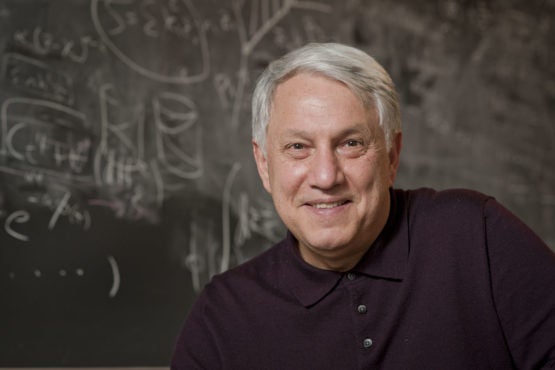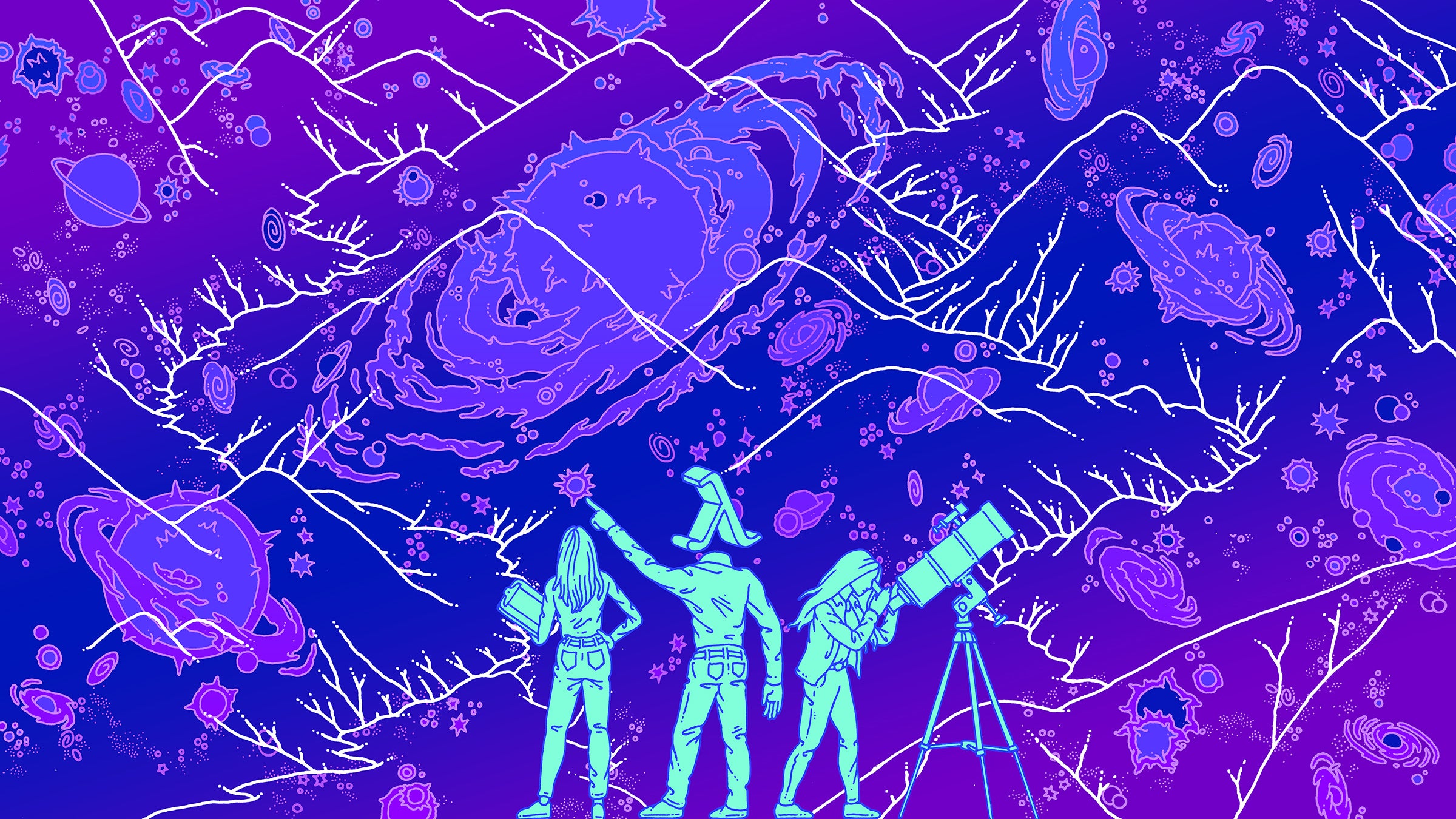The String Theory Landscape
The most recent update to the Big Bang theory, called the String Theory Landscape, arose out of elements of string theory and cosmic inflation. The theory’s inclusion of a multiverse and its denial of immutable physical laws has raised debates that continue to this day. This story is part 1 of a five-part series.
The Big Bang theory describes the abrupt origins of space and time from a swiftly unfurling singularity – a hot, dense point of pure potential, packed impossibly full with eternity and the rudiments of creation. As with the universe it seeks to explain, the theory is endlessly evolving. Ever since its proposal nearly a century ago, physicists have revised and remade it to reflect new scientific concepts and discoveries.
The latest draft of the scientific story of genesis is called the String Theory Landscape. Entwined at its heart are two of the strangest and most enduring ideas in modern physics – string theory and cosmic inflation – which Stanford physicists helped bring together nearly two decades ago.
String theory asserts that the basic building blocks of reality are vibrating, one-dimensional loops of energy that quiver in 10 or more dimensions to strum out the elementary particles and fundamental forces of nature.
Cosmic inflation holds that the Big Bang began with a period of exponential expansion that swelled our universe from a fragile quantum speck to a vast manor of emptiness a quarter-billion-light-years wide in a flicker of a flicker of time.
According to the theory, this heavenly sprawl still occurs in distant corners of the cosmos, spinning out a web of related daughter universes that connect to form a much larger “multiverse.”
For decades, the two theories circled one another, each advancing along a seemingly unique track and independently gaining momentum among physicists, until an unexpected discovery drove them together. The String Theory Landscape was born in the wake of their collision – and physics has never been quite the same since.
It was an “earthquake that caused enormous consternation and controversy among theoretical physicists,” wrote Leonard Susskind, the Felix Bloch Professor in Physics at Stanford’s School of Humanities and Sciences, in his 2005 book The Cosmic Landscape.

“It probably bothered the first human beings who realized that the world was not just their local valley. It probably terrified them a little bit, but by now we’re used to the world getting bigger and bigger. The String Theory Landscape just says it’s way bigger than we thought.”
—Leonard Susskind
Professor of Physics
An old debate
The String Theory Landscape rekindled the ashes of an old debate in physics, one that smolders to this day. On one side are those who contend, as Albert Einstein once did, that the laws of nature are elegant, immutable and inevitable, and that they can be discovered and described through mathematics. In contrast, most Landscape proponents believe that while the underlying equations of string theory may be simple and elegant, the solutions to those equations are tremendously complex and infinitely diverse.
This diversity, they say, is key to explaining certain baffling features of our universe, like the fact that several parameters in physics and cosmology appear to be curiously fine-tuned for life forms like us to exist. Perhaps the most glaring example is the cosmological constant, which relates to a universal repulsive force that is pushing space-time apart. Physicists have struggled to explain why the tiny value of this constant just happens to lie within the narrow band that allows stars and planets to form and biological life to evolve. But if there are innumerable universes, each with differing laws of physics, then it should not be surprising that we inhabit one where the cosmological constant is small – if things were any different, we could not exist to marvel at the coincidence.

Andrei Linde, professor of physics. (Image credit: L.A. Cicero)
“The String Theory Landscape potentially explains many properties of our world,” said physicist Andrei Linde, the Harald Trap Friis Professor at Stanford. “It may explain not just the cosmological constant, but also why the mass of the proton and neutron are almost exactly the same, why the electron mass is so small, and why we live in a universe with three dimensions of space and not 10. There is no other theory that can do that.”
The String Theory Landscape also rouses fierce emotions because it touches upon questions that cut to the heart of modern physics and science in general. If gravity’s strength can vary from one universe to the next, what is the point of trying to understand its extraordinary weakness in our universe? And if a theory can’t make testable predictions, is it still science? “One dominant view in the community is that believing in the Landscape might have the negative effect of leading people away from fundamental physics, so we shouldn’t even discuss it,” said Shamit Kachru, who holds the Wells Family Directorship of the Stanford Institute for Theoretical Physics (SITP).
Landscape supporters say the theory is just the latest helping of humble pie that humanity has had to swallow as its sense of privilege in the universe has been slowly effaced by centuries of scientific progress. “It probably bothered the first human beings who realized that the world was not just their local valley,” Susskind said. “It probably terrified them a little bit, but by now we’re used to the world getting bigger and bigger. The String Theory Landscape just says it’s way bigger than we thought.”

